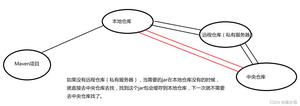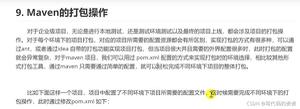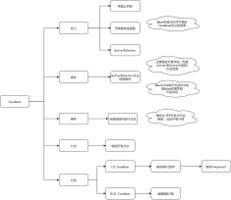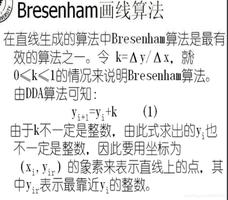为什么我用OpenSSL和Java生成的RSA-SHA256签名不同?
我想用Java生成RSA-SHA256签名,但无法在控制台上生成与OpenSSL相同的签名。
这是我对OpenSSL所做的工作:
生成密钥对:
openssl genrsa -out private.pem 1024提取公钥:
openssl rsa -in private.pem -out public.pem -outform PEM -pubout创建数据哈希:
echo 'data to sign' > data.txtopenssl dgst -sha256 < data.txt > hash
生成的哈希文件从(stdin)=我手工删除的文件开始(首先忘了提起它,谢谢mata)。
签名哈希:
openssl rsautl -sign -inkey private.pem -keyform PEM -in hash > signature为了在Java中重现结果,我首先将私钥从PEM转换为DER:
openssl pkcs8 -topk8 -inform PEM -outform DER -in private.pem -nocrypt > private.der现在,我编写了这个Java类来生成相同的签名:
public class RSATest { public static void main(String[] args) throws IOException,
NoSuchAlgorithmException, InvalidKeySpecException,
InvalidKeyException, SignatureException {
byte[] encodedPrivateKey = readFile("private.der");
byte[] content = readFile("data.txt");
KeyFactory keyFactory = KeyFactory.getInstance("RSA");
PKCS8EncodedKeySpec keySpec = new PKCS8EncodedKeySpec(encodedPrivateKey);
RSAPrivateKey privateKey = (RSAPrivateKey) keyFactory
.generatePrivate(keySpec);
Signature signature = Signature.getInstance("SHA256withRSA");
signature.initSign(privateKey);
signature.update(content);
byte[] signatureBytes = signature.sign();
FileOutputStream fos = new FileOutputStream("signature-java");
fos.write(signatureBytes);
fos.close();
}
private static byte[] readFile(String filename) throws IOException {
File file = new File(filename);
BufferedInputStream bis = new BufferedInputStream(new FileInputStream(
file));
byte[] bytes = new byte[(int) file.length()];
bis.read(bytes);
bis.close();
return bytes;
}
}
不幸的是结果并不相同,所以我想我一定做错了什么,但我不知道该怎么办。你们中的某人可以帮助我找到错误吗?
回答:
openssl dgst -sha256 < data.txt产生类似:
(stdin)= b39eaeb437e33087132f01c2abc60c6a16904ee3771cd7b0d622d01061b40729注意(stdin)=“?你不希望将其作为哈希的一部分,如果需要创建摘要,请使用该-binary选项。
尝试使用它来签署你的数据:
openssl sha -sha256 -sign private.pem < data.txt这可以满足你的所有需求。
编辑-更多说明:
让我们创建一个摘要并显示它
$ openssl dgst -sha256 -binary < data.txt > digest$ hd digest
00000000 26 3b 0a a1 2e b9 32 db b8 dc d3 6f 37 94 0b 05 |&;....2....o7...|
00000010 71 9c ba 79 46 34 28 9f 5c 5b 98 9a 64 61 c9 ec |q..yF4(.\[..da..|
现在,我们进行摘要并使用rsautl以下命令对int进行签名:
$ openssl rsautl -sign -inkey private.pem < digest > sign1$ hd sign1
00000000 1b 7a cf a4 8d 41 8e 04 ed 3a bb ba 86 f1 f8 e0 |.z...A...:......|
00000010 df f7 47 3e d7 a7 f4 90 7a 05 f8 7f 45 e5 29 e7 |..G>....z...E.).|
00000020 9f f4 2c 91 97 2f e7 26 69 9f 6a 07 a3 48 1b 85 |..,../.&i.j..H..|
00000030 2e f8 ee 44 4d 25 9f ae 05 95 81 c9 e3 07 68 ad |...DM%........h.|
现在让我们dgst直接使用以下文件签名:
$ openssl dgst -sha256 -sign private.pem < data.txt > sign2$ hd sign2
00000000 15 c2 94 87 eb e6 cb 45 c8 63 0c 97 60 d3 07 f3 |.......E.c..`...|
00000010 dc 65 32 ad 44 1c c2 2a 7f a3 e1 fc dd 84 27 8c |.e2.D..*......'.|
00000020 77 a6 97 2b 33 6b c6 d7 7d e1 1d 39 5c 48 b6 48 |w..+3k..}..9\H.H|
00000030 cb 18 be bf 6a 66 90 d3 88 89 52 6c dd d1 b9 99 |....jf....Rl....|
那么这里有什么不同?为此,我们可以验证签名并显示原始输出。这两个文件都包含摘要,但是元数据和填充不同:
$ openssl rsautl -raw -verify -inkey private.pem < sign1 | hd00000000 00 01 ff ff ff ff ff ff ff ff ff ff ff ff ff ff |................|
00000010 ff ff ff ff ff ff ff ff ff ff ff ff ff ff ff 00 |................|
00000020 26 3b 0a a1 2e b9 32 db b8 dc d3 6f 37 94 0b 05 |&;....2....o7...|
00000030 71 9c ba 79 46 34 28 9f 5c 5b 98 9a 64 61 c9 ec |q..yF4(.\[..da..|
$ openssl rsautl -raw -verify -inkey private.pem < sign2 | hd
00000000 00 01 ff ff ff ff ff ff ff ff ff ff 00 30 31 30 |.............010|
00000010 0d 06 09 60 86 48 01 65 03 04 02 01 05 00 04 20 |...`.H.e....... |
00000020 26 3b 0a a1 2e b9 32 db b8 dc d3 6f 37 94 0b 05 |&;....2....o7...|
00000030 71 9c ba 79 46 34 28 9f 5c 5b 98 9a 64 61 c9 ec |q..yF4(.\[..da..|
为了更清楚地看到这一点,我们可以尝试使用该-asn1parse标志,该标志不适用于第一个签名,但是对于第二个标志,它显示了签名的正确结构:
$ openssl rsautl -verify -inkey private.pem -asn1parse < sign1Error in encoding
139931349546656:error:0D07209B:asn1 encoding routines:ASN1_get_object:too long:asn1_lib.c:142:
$ openssl rsautl -verify -inkey private.pem -asn1parse < sign2
0:d=0 hl=2 l= 49 cons: SEQUENCE
2:d=1 hl=2 l= 13 cons: SEQUENCE
4:d=2 hl=2 l= 9 prim: OBJECT :sha256
15:d=2 hl=2 l= 0 prim: NULL
17:d=1 hl=2 l= 32 prim: OCTET STRING
0000 - 26 3b 0a a1 2e b9 32 db-b8 dc d3 6f 37 94 0b 05 &;....2....o7...
0010 - 71 9c ba 79 46 34 28 9f-5c 5b 98 9a 64 61 c9 ec q..yF4(.\[..da..
以上是 为什么我用OpenSSL和Java生成的RSA-SHA256签名不同? 的全部内容, 来源链接: utcz.com/qa/426594.html









